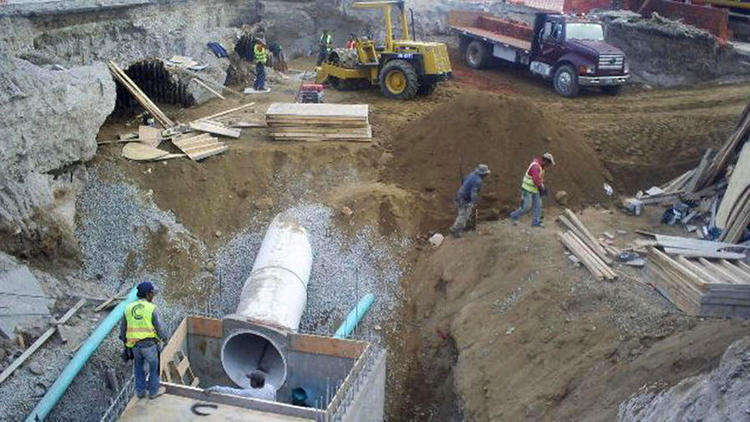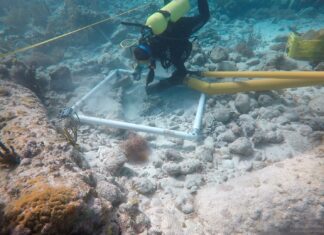Baja California’s governor is preparing to declare a state of emergency in the coming days, hoping to draw financial aid for Tijuana’s strained and underfunded sewage system following a massive spill that sent millions of gallons of untreated wastewater from Tijuana across the border and into San Diego last month.
The incident was triggered by the collapse of a major sewage trunk line in Tijuana, state officials say, and repairs led to the release of a large amount of untreated sewage into the Tijuana River channel, which empties into the ocean at Imperial Beach. The spill generated outrage north of the border, especially because of Mexico’s failure to notify U.S. officials, who found out only after residents reported foul odors over a two-week period.
The spill has put a spotlight on the need for improvements, even after years of collaboration between the United States and Mexico to minimize the cross-border flow of untreated sewage from Tijuana.
Investments in Tijuana’s collection and treatment facilities have gone a long way toward reducing cross-border impacts. Today, contamination is largely contained during dry weather, though rainy weather flows continue to carry sediment and contamination to the river’s mouth just north of the border.
But even as authorities plan some major new wastewater projects, critics say there is still much work to be done — and not just in infrastructure. Dedina and others are calling for better communication when such incidents occur. Following last month’s incident, one U.S. official initially estimated the spill at 143 million gallons over a 17-day period, while a subsequent estimate suggested it could have been far higher — 230 million gallons. But an official with the state-run water utility in Tijuana said in an interview last week that the spill was far smaller and shorter: under 30 million gallons over a four-day period.
Divided by the international border, San Diego shares a watershed with Tijuana. As a result, any sewage flows from Tijuana’s tightly packed colonias that are not captured and sent for treatment risk ending up downstream on the beaches of southern San Diego County.
“We have an international issue with this spill of sewage into the ocean, which is truly sad, and even shameful,” Baja California’s governor, Francisco Vega de Lamadrid, said Wednesday.
Vega is expected to declare the state of emergency as early as this week, an action that would make the state utility eligible for different sources of federal and local funding in Mexico to conduct immediate repairs.
Rainy weather always places pressure on Tijuana’s subterranean network of sewage pipes, many of them weakened by age and in need of replacement. Officials say that one of the reasons is that many houses in Tijuana are built so that rainwater drains directly into the sewage system. After several years of little precipitation, the system came under much strain in December and January.
“Tijuana is part of a developing country and has very stretched resources to provide basic infrastructure,” said Paul Ganster, a San Diego State University professor who chairs the Good Neighbor Environmental Board, a federal advisory group. “It’s not unexpected to encounter these problems after rains.”
Miguel Lemus, director of the State Public Service Commission in Tijuana, known as CESPT, said his agency urgently needs 72 million pesos — about $3.6 million — to conduct the repairs on four other sewage trunk lines that also suffered damage. But Tijuana needs far more than that, he said — more than $40 million over the next year — to perform necessary upgrades to the system.
A new state plan drafted with the collaboration of bilateral organizations is expected to trigger funding for critical sewage infrastructure projects in Tijuana and Rosarito Beach. Foremost is the replacement of Tijuana’s overburdened and failing sewage treatment plant at Punta Bandera, which discharges into the Pacific Ocean “raw and treated sewage” that can reach as far north as Coronado, according to a letter this year sent by the mayors of Imperial Beach, Coronado, Chula Vista and National City, and San Diego councilman David Alvarez.
Also a priority in the plan is the construction of a pipeline to collect sewage from coastal communities in Tijuana and Rosarito Beach.





